Introduction: The City That Never Sleeps
Ho Chi Minh City, formerly known as Saigon, is the vibrant heart of Southern Vietnam. A city of constant motion, it is a mesmerizing blend of colonial grandeur, historic temples, and modern skyscrapers. The streets are a non-stop ballet of motorbikes, the air is thick with the aroma of street food, and the energy is palpable. This is a city that never sleeps, a place where the past and future collide in a spectacular display of culture and commerce.
This guide will serve as your comprehensive resource for exploring Ho Chi Minh City. We’ll navigate its rich history, iconic landmarks, and a culinary scene that is as diverse as the city itself, ensuring your first visit is both memorable and authentic.
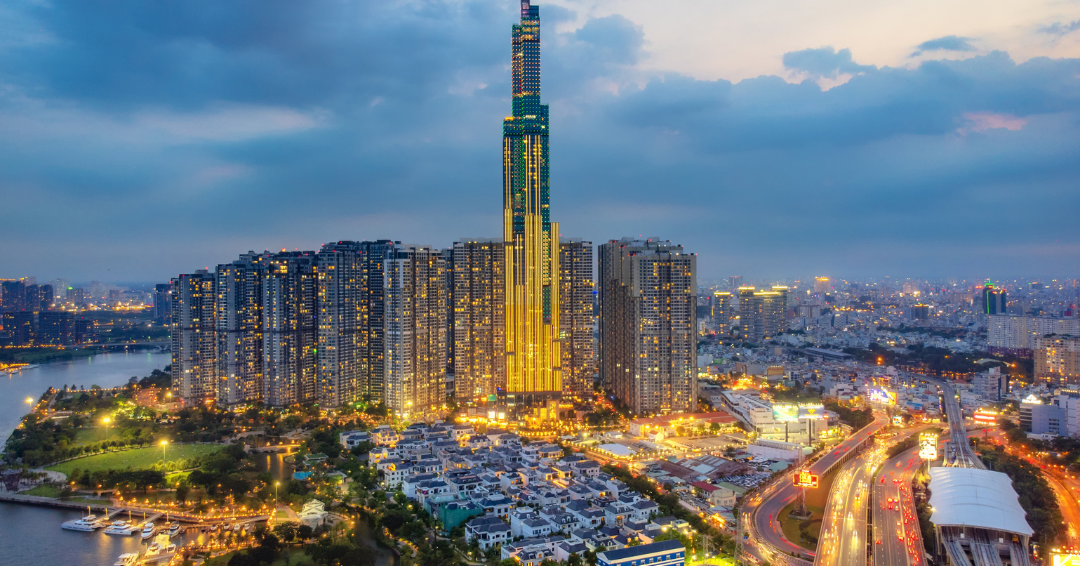
Best Time to Visit Ho Chi Minh City
Ho Chi Minh City has a tropical climate with two distinct seasons:
- The Dry Season (December to April): Widely considered the best time to visit. The weather is hot and sunny, with low humidity. This is the perfect period for sightseeing and outdoor activities.
- The Wet Season (May to November): Characterized by daily heavy but short-lived downpours, which typically last about an hour in the late afternoon. The rain can be a welcome break from the heat, and the city’s air is often clearer afterward. Don’t let the rain deter you; it’s easy to plan around.
Getting to Ho Chi Minh City & Getting Around
Getting to HCMC
- By Air: Tan Son Nhat International Airport (SGN) is the main gateway. It’s located just 6 km from the city center, making the trip into town quick and convenient.
- By Train: Ho Chi Minh City is the final stop on the “Reunification Express,” connecting it with Hanoi and other major cities.
- By Bus: A vast network of long-distance buses connects HCMC to cities across Vietnam and even to neighboring Cambodia.
Getting Around HCMC
- Taxis & Ride-hailing Services: Grab is the most popular app for booking motorbikes and cars, offering transparent pricing and convenience. Traditional taxis from reputable companies like Vinasun and Mai Linh are also plentiful.
- Motorbike: This is the most common form of transport. If you’re an experienced rider, renting a motorbike is a great way to explore.
- Walking: The downtown area, especially around the Notre Dame Cathedral and Ben Thanh Market, is very walkable.
TOP 10 MUST-SEE ATTRACTIONS
1. War Remnants Museum
This powerful museum offers a sobering and essential look at the Vietnam War. It showcases the brutal realities of the conflict through vivid photographs, military artifacts, and historical exhibits. It’s a profound experience that provides critical historical context for any visitor.
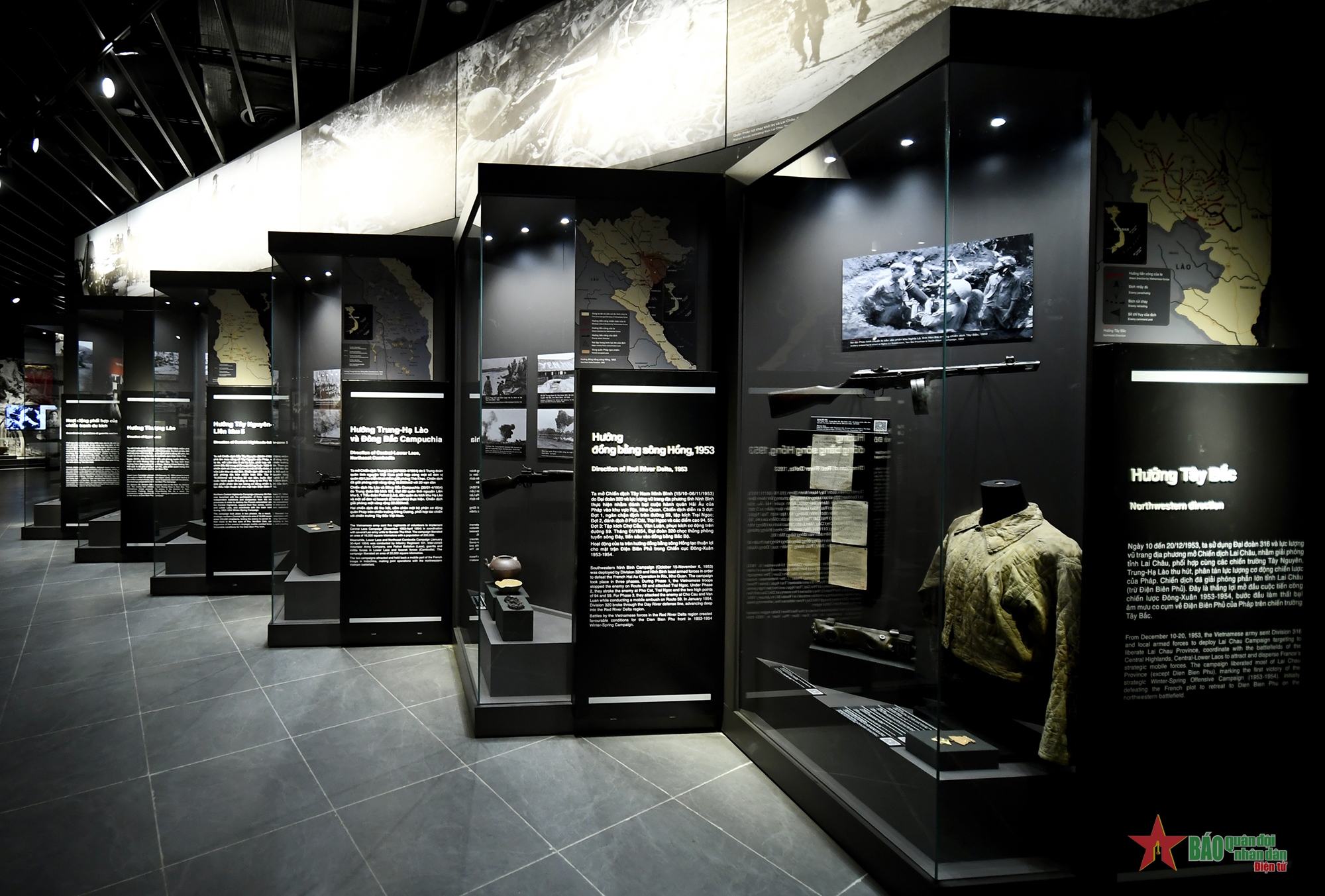
- What to Expect: The museum is a somber and emotionally charged experience. Exhibits cover the devastating effects of Agent Orange, the My Lai massacre, and the experiences of American and Vietnamese soldiers.
- Key Fact: The museum’s collection of military hardware, including tanks and helicopters, is one of the most extensive in the country.
2. Reunification Palace (Dinh Độc Lập)
A magnificent piece of 1960s architecture, the Reunification Palace is a landmark of modern Vietnamese history. It was the home and workplace of the President of South Vietnam during the war, and its gates were famously breached by North Vietnamese tanks on April 30, 1975, marking the end of the conflict.
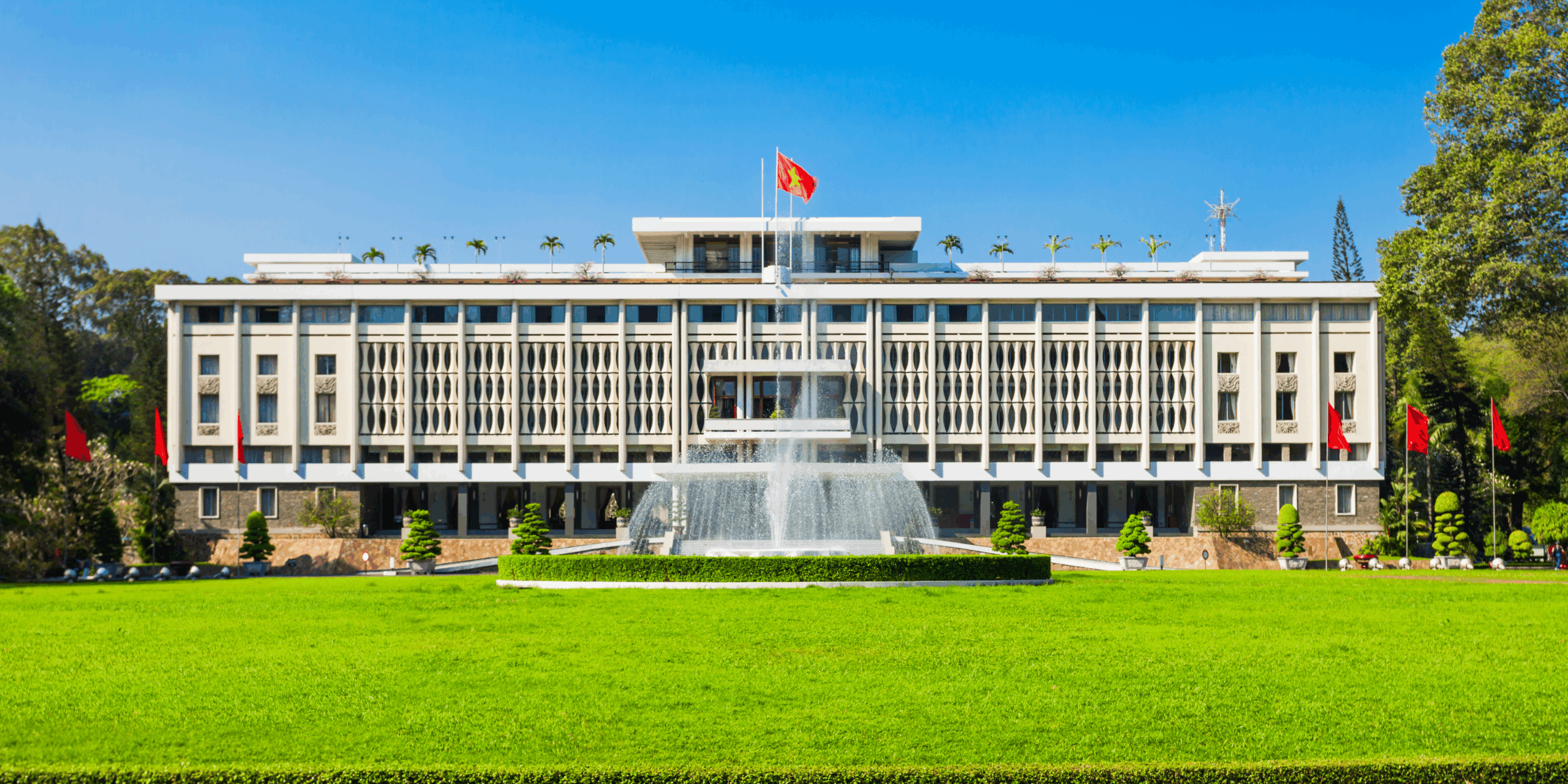
- What to Expect: You can tour the state rooms, a telecommunications command center in the basement, and the private living quarters, all of which have been preserved in their original state.
- Key Fact: The palace’s design incorporates traditional Chinese and Vietnamese elements, with a floor plan resembling the Chinese character for “good fortune.”
3. Notre Dame Cathedral & Central Post Office
These two magnificent French colonial-era buildings stand side-by-side in the heart of the city, representing a powerful link to Vietnam’s past. The cathedral, with its distinct red bricks imported from France, and the post office, designed by Gustave Eiffel, are architectural marvels.
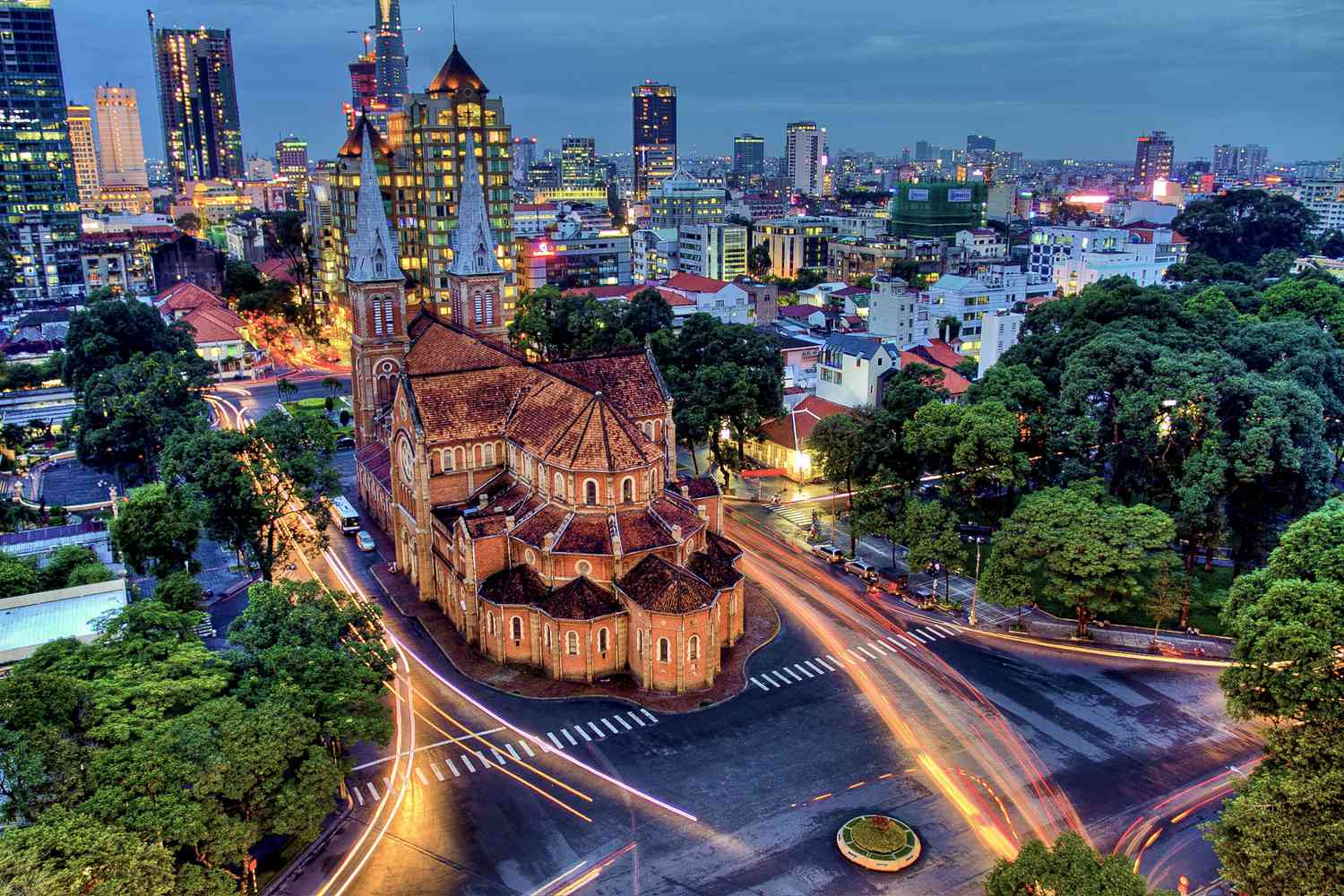
- What to Do: Admire the stunning architecture of both buildings. Inside the post office, you can see beautiful painted maps and send a postcard to a loved one. The area is a popular meeting point and a perfect spot for photos.
- Key Fact: The Notre Dame Cathedral’s red bricks have reportedly never faded in color since their installation over a century ago.
4. Ben Thanh Market
A bustling hub of commerce and culture, Ben Thanh Market is one of the most famous landmarks in Ho Chi Minh City. This is where you can find a bit of everything, from traditional handicrafts and textiles to fresh produce and incredible street food.
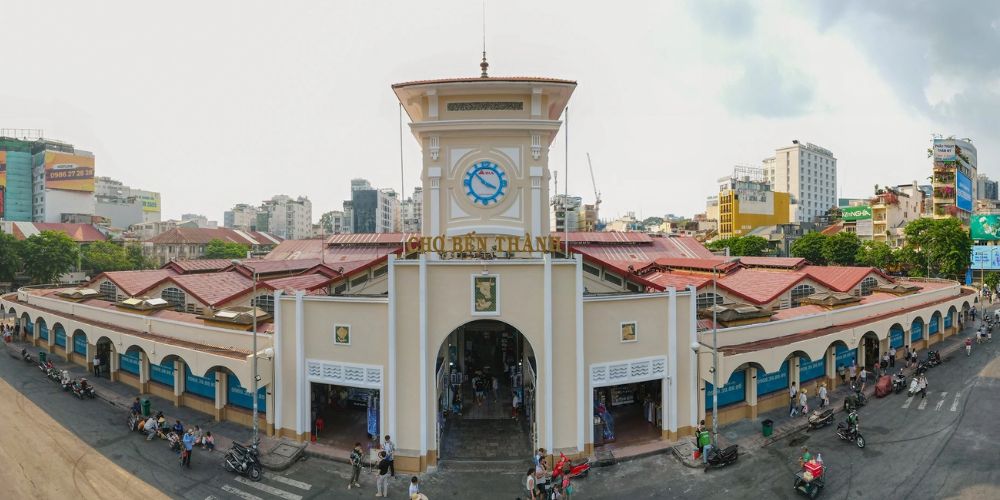
- What to Expect: Be prepared for a sensory overload. The market is a maze of stalls, colors, and aromas. Practice your bargaining skills, but remember to be respectful.
- Key Fact: The market’s four iconic entrances each face a cardinal direction, making it a central point in the city’s downtown area.
5. Bitexco Financial Tower
For a modern perspective on the city, the Bitexco Financial Tower is a must-visit. With its unique shape inspired by a lotus flower, the building offers a stunning observation deck on the 49th floor.
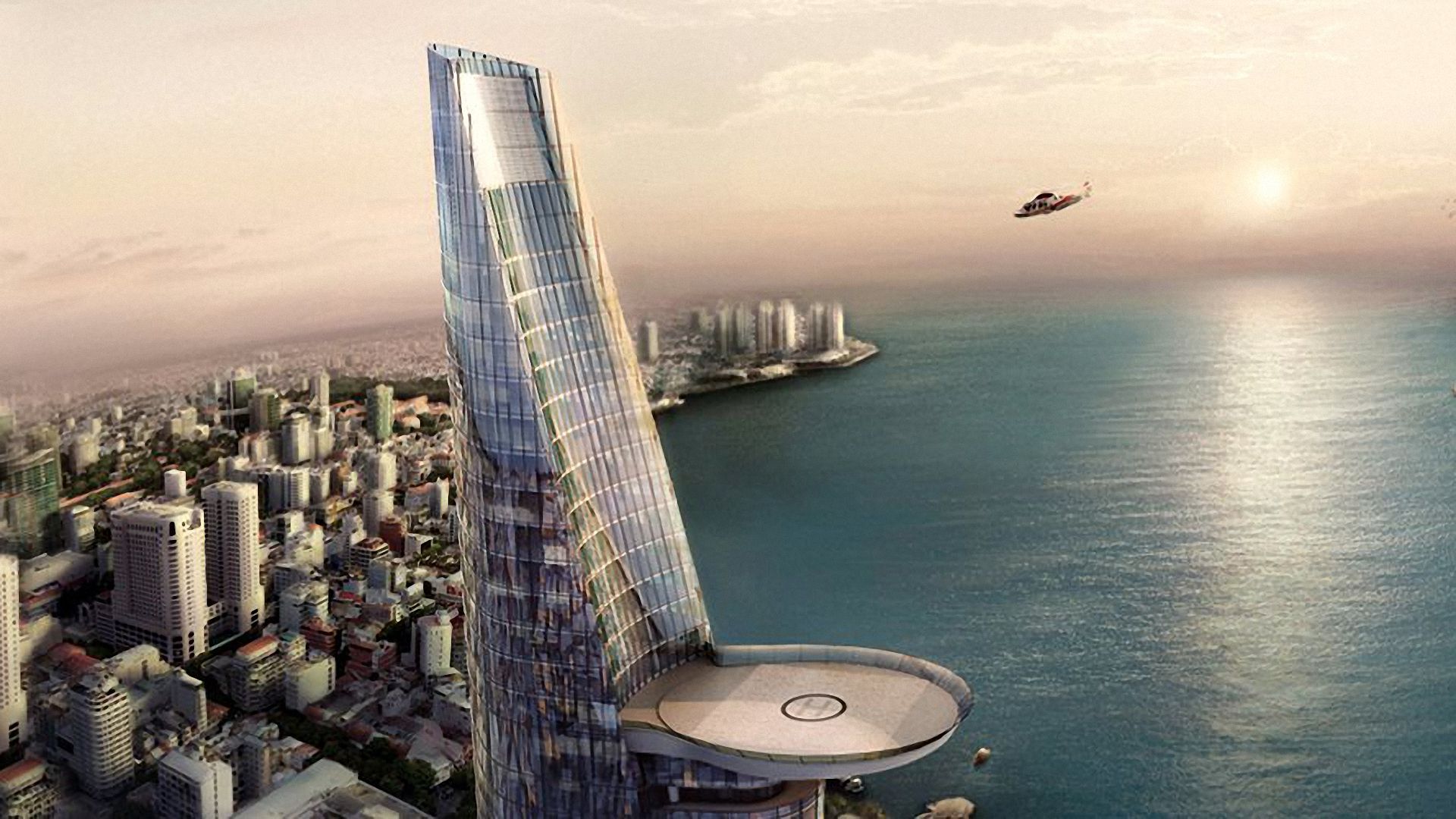
- What to Do: Take a high-speed elevator to the Saigon Skydeck for breathtaking 360-degree views of the city. Visiting at sunset is highly recommended.
- Key Fact: The building’s unique design and helipad on the 52nd floor have made it a symbol of Ho Chi Minh City’s rapid economic growth.
6. Nguyen Hue Walking Street
A wide, beautiful boulevard that connects the City Hall with the Saigon River. This street is a pedestrian-only zone and a lively gathering place for locals and tourists, especially in the evenings.
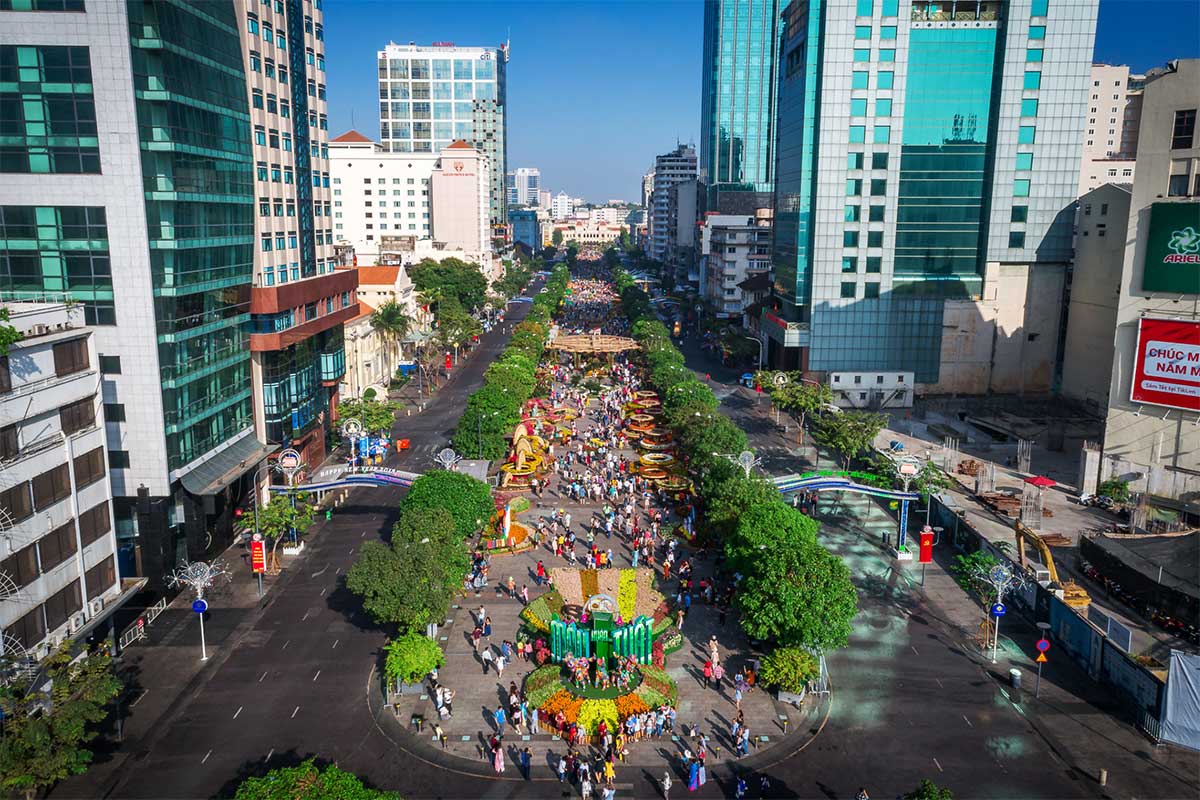
- What to Do: Enjoy a leisurely stroll, watch the musical water fountain, or simply people-watch from one of the many cafes and restaurants lining the street. The area is particularly vibrant during festivals like Tết.
- Key Fact: The street is famous for the “apartment cafe” building, a unique nine-story building where each apartment has been converted into a trendy cafe or shop.
7. Cu Chi Tunnels
Located a short drive from the city, the Cu Chi Tunnels are an immense network of underground tunnels used by the Viet Cong during the Vietnam War. This historical site offers a powerful look into the resourcefulness and resilience of the Vietnamese people.
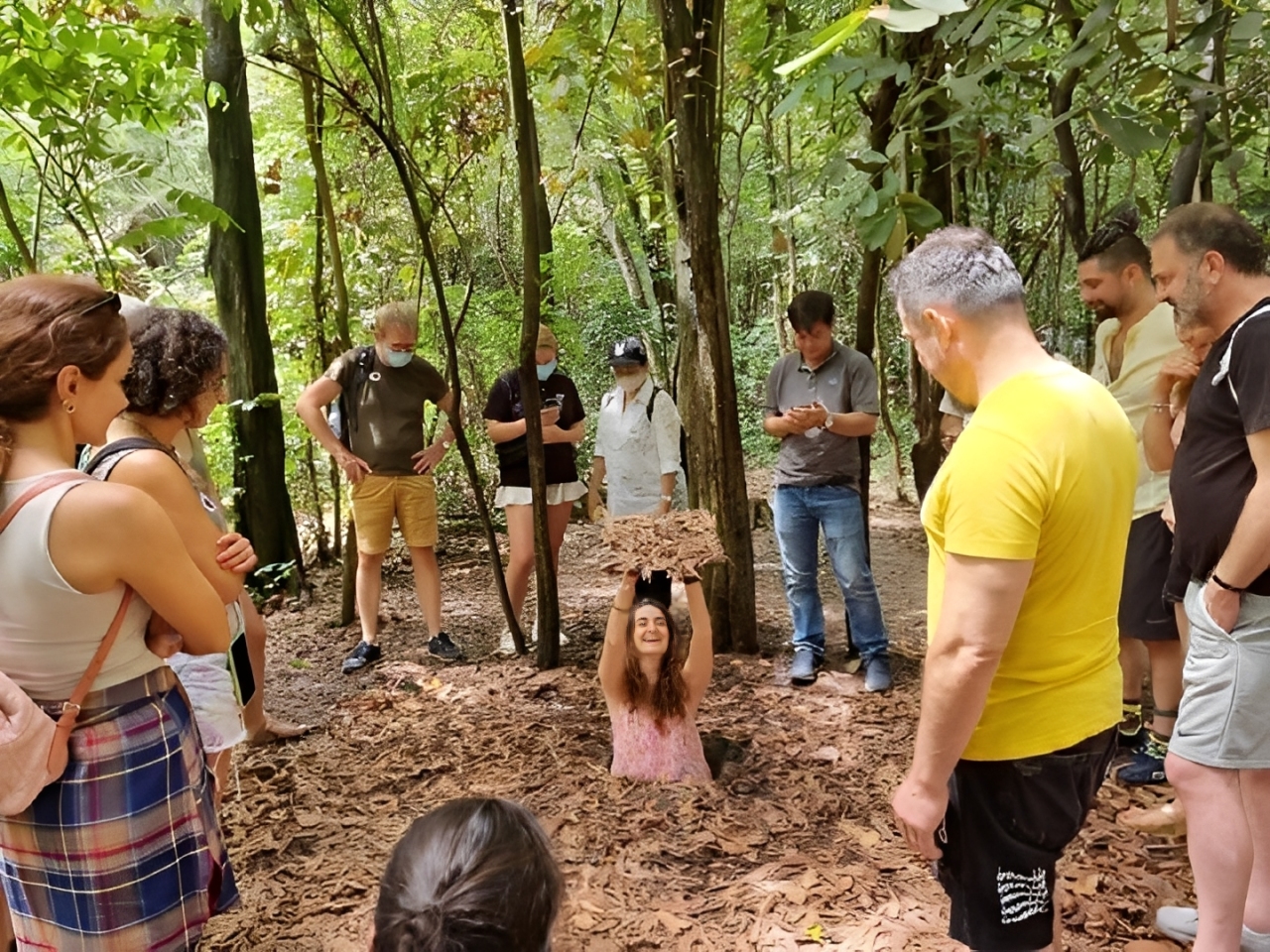
- What to Expect: You can crawl through a safe, widened section of the tunnels, see the intricate booby traps, and watch historical documentaries. It’s an eye-opening and unforgettable experience.
- Key Fact: The tunnels were so well-camouflaged and intricate that they included living areas, kitchens, hospitals, and command centers.
8. Binh Tay Market (Chợ Bình Tây)
Located in the heart of Saigon’s Chinatown (Chợ Lớn), Binh Tay Market is a historical and cultural gem. It’s a sprawling market with a distinct Chinese architectural style, offering a more authentic and less touristy shopping experience than Ben Thanh.
- What to Expect: Explore the hundreds of stalls selling everything from fresh produce and spices to colorful textiles and handcrafted goods. The market is an excellent place to observe local life and find unique items.
- Key Fact: The market was funded by a Chinese businessman in the early 20th century and has been a central hub for the Chinese community for decades.
9. Thien Hau Pagoda
Also located in Chinatown, Thien Hau Pagoda is one of the oldest and most beautiful Chinese temples in the city. Dedicated to Thiên Hậu, the Lady of the Sea, the pagoda is a peaceful retreat from the bustling streets.
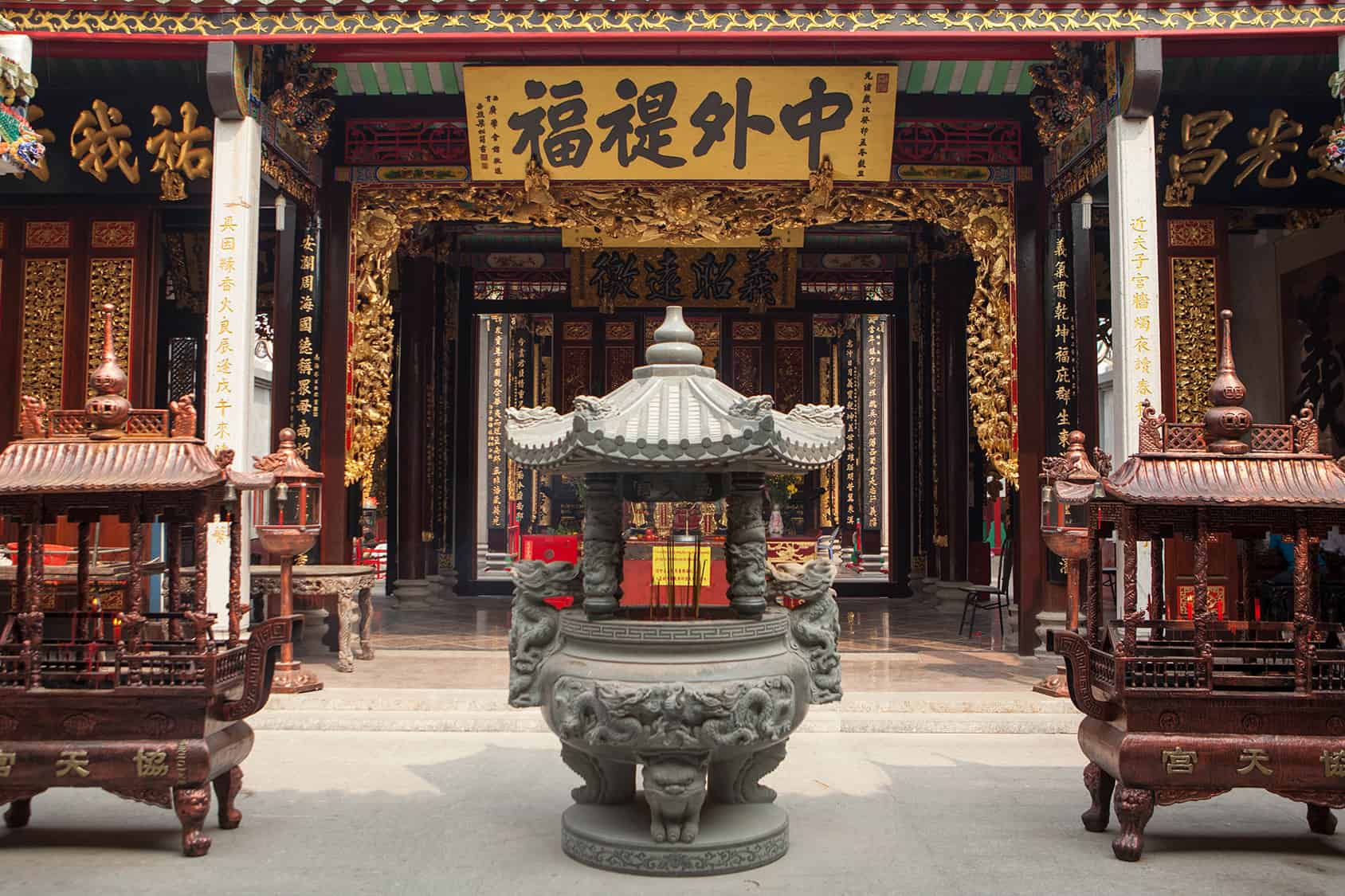
- What to Expect: Admire the intricate craftsmanship, beautiful murals, and delicate ceramic figurines that tell stories from Chinese mythology. The pagoda is a working temple, and you’ll often see locals lighting incense and praying.
- Key Fact: The pagoda’s roof is decorated with miniature figures and sculptures, and its interior is filled with giant spiral incense coils hanging from the ceiling.
10. The Golden Dragon Water Puppet Theatre
For a unique cultural experience, a visit to the Golden Dragon Water Puppet Theatre is a must. This ancient art form, originating in the rice paddies of Northern Vietnam, tells folk tales and historical stories through puppets dancing on a stage of water.
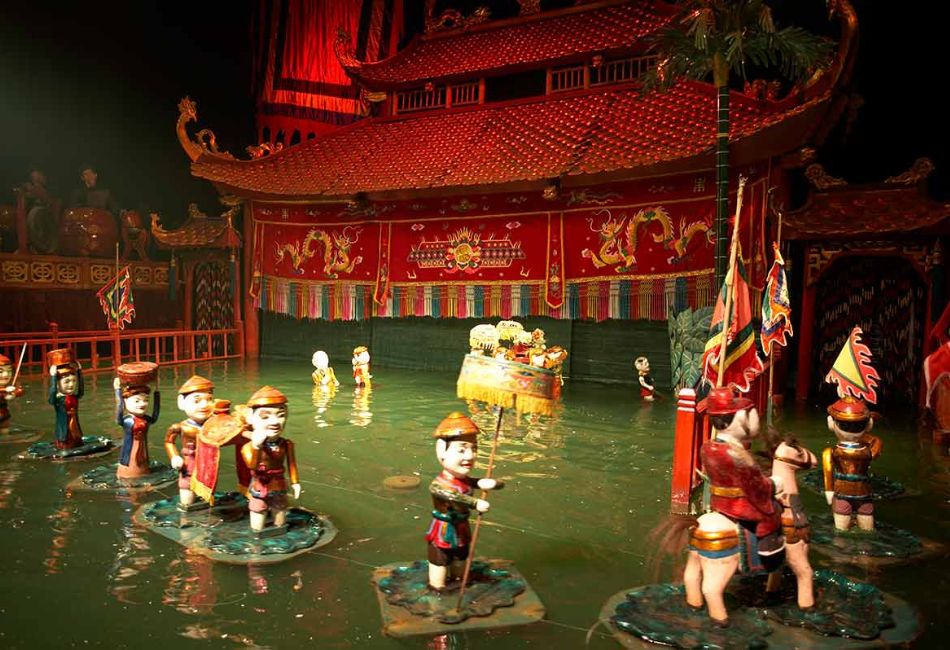
- What to Expect: Enjoy a show filled with traditional music, colorful puppets, and engaging stories that offer a fascinating glimpse into Vietnamese folklore and rural life.
- Key Fact: The art of water puppetry dates back to the 11th century and is a cherished part of Vietnam’s intangible cultural heritage.
A Taste of Ho Chi Minh City: Your Culinary Journey
Ho Chi Minh City’s culinary scene is a vibrant and flavorful reflection of its past and present. Beyond the well-known phở, here are some must-try local specialties that define the city’s street food culture.
- Cơm Tấm (Broken Rice): What was once a humble, working-class meal made from rice grains “broken” during milling is now a quintessential Saigon dish. A plate of cơm tấm features fluffy broken rice topped with a grilled pork chop (sườn nướng), a Vietnamese meatloaf (chả trứng), and pickled vegetables, all drizzled with a sweet and savory sauce (nước mắm).

- Phá Lấu (Offal Stew): For the adventurous eater, phá lấu is a rich and flavorful street food that embodies the city’s culinary boldness. The offal (tripe, intestines, liver, etc.) is slow-braised in a coconut milk-based broth with spices like star anise and cinnamon. It’s typically served with bread for dipping or with noodles.
- Mì Sủi Cảo (Wonton Noodles): A delicious fusion of Chinese and Vietnamese flavors, mì sủi cảo is a staple in Saigon’s vibrant Chinatown. The dish consists of thin egg noodles, plump wontons filled with pork and shrimp, and slices of char siu pork, all served in a light and savory broth.
- Hủ Tiếu Sài Gòn (Saigon Noodle Soup): A distinctly Southern noodle soup, hủ tiếu is celebrated for its clear, light, and slightly sweet broth. The dish typically includes chewy rice noodles, slices of pork, shrimp, and fresh herbs, often served with a side of crispy fried dough sticks (dầu cháo quẩy) for dipping.
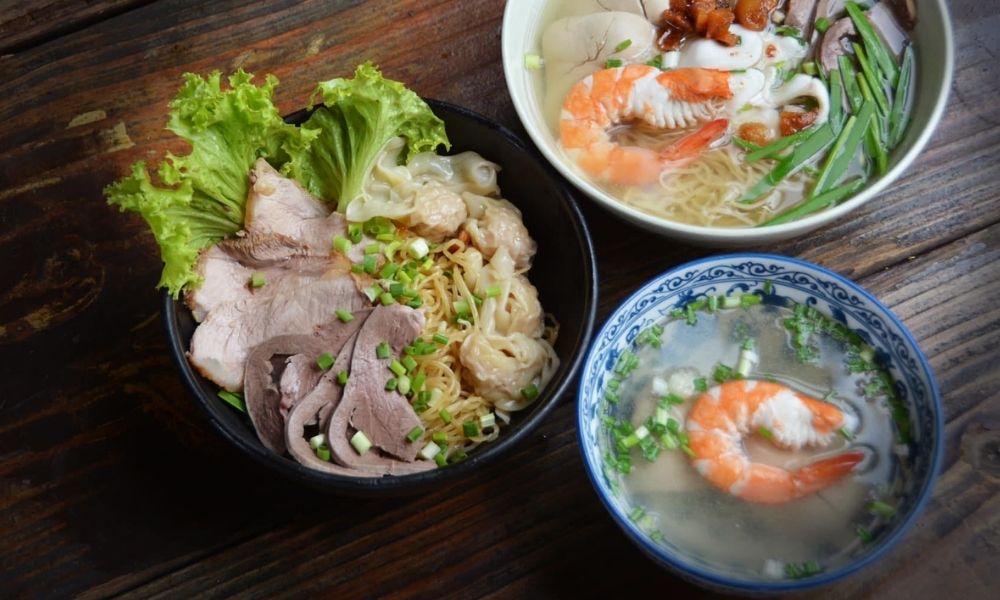
- Cơm Cháy Chà Bông (Rice Crackers with Pork Floss): A popular and addictive street snack, cơm cháy chà bông consists of crispy, deep-fried rice patties topped with savory pork floss (chà bông), sliced scallions, and a drizzle of chili sauce. It’s the perfect treat for a quick bite or a unique souvenir.
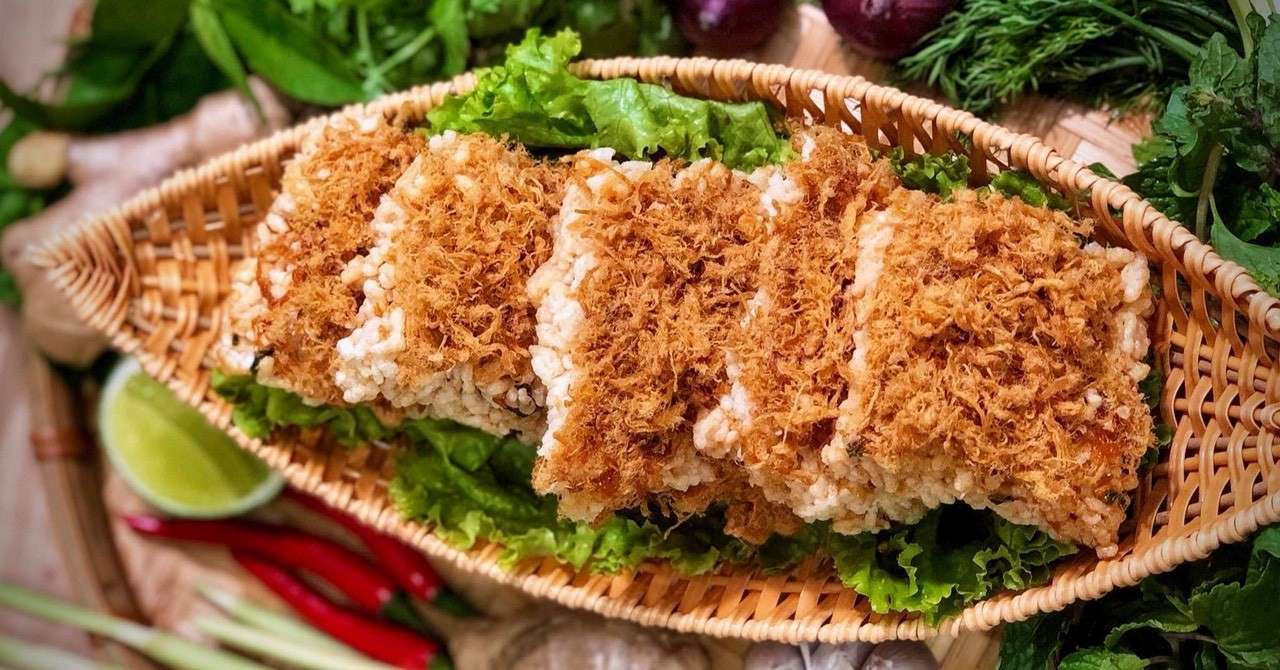
Insider Tips for a Perfect Trip
- Navigating the Traffic: Like Hanoi, traffic in Ho Chi Minh City is a force of nature. Use the Grab app for a stress-free travel experience.
- Hydration: The weather is hot year-round. Always carry a water bottle and stay hydrated, especially during the day.
- Safety: While generally safe, be mindful of your belongings, especially in crowded areas like markets.
The Asian Rainbow Travel Difference
Ho Chi Minh City is a place of incredible energy and complexity, and navigating it can be overwhelming. A bespoke tour with Asian Rainbow Travel ensures you experience the best of the city without the stress. We handle all the logistics, from transportation to ticket bookings, and our expert local guides will take you to the most authentic eateries and share stories that bring each landmark to life. Let us help you turn your Ho Chi Minh City visit into a truly unforgettable adventure.
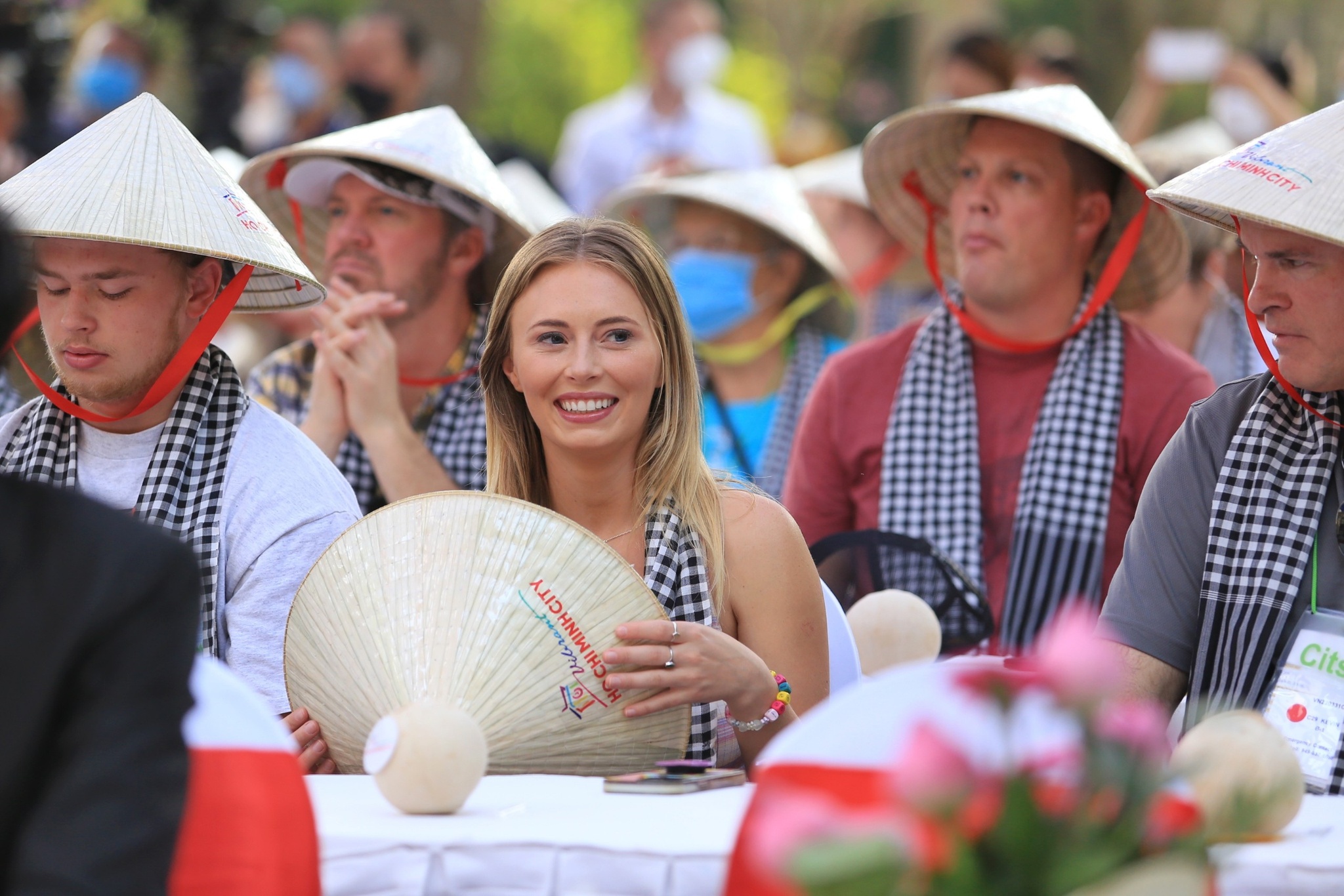
Ready to explore the dynamic heart of Vietnam? Contact us today to start planning your perfect trip.
Credit: internet
📞 WhatsApp: +84 97 902 23 02
📍Facebook: Asian Rainbow Travel
Your Travel – Your Style
Asian Rainbow Travel – Creating journeys that reconnect and inspire, across generations.















